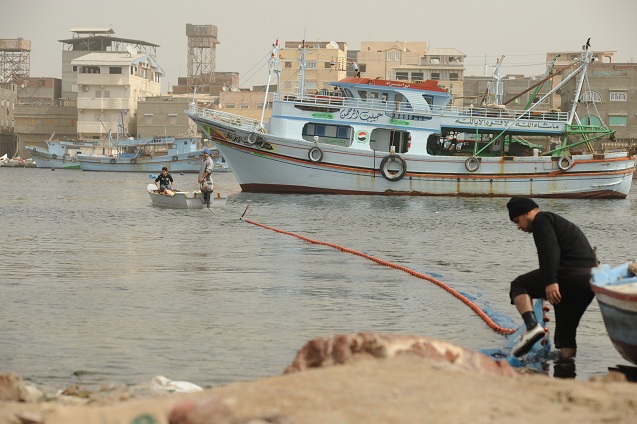
Few can deny that Egypt’s chances of overturning the odds and a five-goal-deficit in the match against Ghana in the return leg of the final round of World Cup qualifiers are minimal.
However, they are not impossible.
On 25 May 2005, Italian champions AC Milan faced off with English outfit from Merseyside, Liverpool, in Istanbul, Turkey in the final game of the European Champions League.
Milan scored three goals in the first 45 minutes, to the extent that the Italian fans began celebrating regaining the highest-profile European trophy.
However, Liverpool pulled off a superb comeback in the second half, scoring three goals and eventually winning the game on penalties.
In football, there is always hope. But hope cannot be present without analysing the reasons why the Egyptian team conceded six goals, and how would it turn the odds around.
In the Baba Yara stadium game, the Ghanaians used a deft trick, the deep-lying forward.
Spartak Moskow striker Abdul Majeed Waris always placed himself between Egypt’s left-back and centre-left back, creating space for Asamoah Gyan to mingle behind Egypt’s backline; this was employed to bring Ghana their first goal.
The same trick was used by Michael Essien in the second goal, but with a different technique. The Ghanaian midfielder exploited left-back Ahmed Shedid’s defensive vulnerabilities and centre-back Mohamed Naguib low pace and lack of concentration to run through the same space.
Every Ghana goal exploited that weak point in a way or another, the area between the left-back and the neighbouring centre-back, beside the weak point every Egyptian team in history had, air balls.
Enough with the past; there is a glimmer of hope in the future.
The trick in the 19 November game is creating a “fiesta” of efficient attacking football while being responsible at the back. To achieve this “fiesta”, at least five players should have pure attacking tasks, with the assistance of two more supporting players.
The Egyptian team does not lack the technical abilities to score five goals against the Black Stars; instead, the challenge is physical.
American head coach Bob Bradley should borrow some tactical tweaks from his predecessor Hassan Shehata’s playbook.
- Two centre-backs and a sweeper
These two centre-backs should not lack speed or physical presence, as they would act as the last defensive line against Ghanaian attacks. The best candidates for this role are Wael Gomaa and youngster Rami Rabee’a.
A sweeper will act as a “water carrier”, picking the ball from the backline and giving it to the creative players with attacking tasks. However, this is not as easy as it sounds. This player will have to combat high Ghanaian pressure in the first third of the pitch, thus this player must be creative, technically adept and supportive of the midfielders. Hossam Ghaly fulfills these criteria, assuming he can overcome the obstacle of his inconsistent performances.
- Supporting wing-backs
Those wing-backs are the key for a five-goal-difference win. The Ghanaians apply a high-defensive-line; this requires a quick, technical wing-back who can make accurate crosses without neglecting his defensive responsibilities during the Ghanaian attacks. This player is definitely not Ahmed Shedid. Sayed Moa’wad on the left and Ahmed El Mohammady on the right are safe – albeit not perfect – choices.
- One ball-winning midfielder
To block goals, you should own the ball.
Ahmed Fathy pulled off a decent performance in Ghana; he can win the ball without conceding a foul in normal circumstances.
Then comes the question, how in the world can one player stand in front the likes of Sulley Muntari and Michael Essien in the Ghanaian midfield?
“Virtual midfielders” are the answer.
The sweeper will have to push forward in support of the ball-winning midfielder, while one of the attacking midfielders will have to help with the midfield’s defensive tasks, and receive the ball and transform defence to attack.
- Four frontline players
This requires two attacking midfielders (Mohamed Salah and Mohamed Abu Trika) and two strikers.
One of the attacking midfielders (Probably Abu Trika) will have to pull back in assist to midfield, look to apply pressure on Ghanaian midfield and receive the ball to transform defence to attack.
Looking at three consecutive African Nations Cup trophies, Egypt’s frontline operates better when playing with two strikers.
The presence of two strikers gives a team many advantages, foremost of which is constant pressure on the weak Ghanaian backline. One of these strikers has to assist Ahmed Fathy in his difficult task of facing off against strong Ghanaian midfield. Mohamed Nagy “Gedo” is a natural striker who has the ability to fulfill such defensive tasks; he is a poacher who does not lack for goal-scoring talent. The other striker should be a well-built target man. A target man is a player who looks to receive balls in the final third of the pitch and feed it to other players as Salah and Abu Trika. This target man will have to lie deep and present a similar model to what Waris presented in the first game. This has Amr Zaki written all over it.
- Faith
Bradley is no psychotherapist, but if he can give his players faith in themselves and in the possibility of overturning the odds, bolstered with the enthusiasm of 30,000 fans in 30 June stadium, the miracle just might happen.



